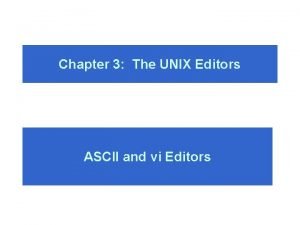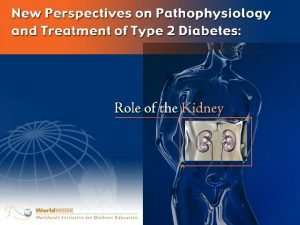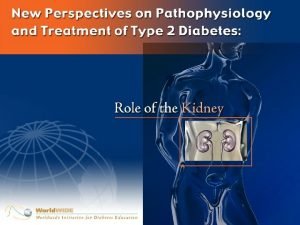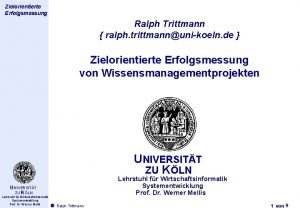Part 1 of 4 Program Editors Ralph Anthony











- Slides: 11

Part 1 of 4

Program Editors Ralph Anthony De. Fronzo, MD Jaime A. Davidson, MD Professor of Medicine and Chief of the Diabetes Division University of Texas Health Science Center Audie L. Murphy Memorial Veterans Hospital San Antonio, Texas, USA President, Worldwide Initiative for Diabetes Education Clinical Professor of Internal Medicine Division of Endocrinology University of Texas Southwestern Medical School Dallas, Texas, USA

Faculty Professor Stefano Del Prato Professor Rury Holman Professor of Endocrinology and Metabolism School of Medicine University of Pisa, Italy Professor of Diabetic Medicine Honorary Consultant Physician Diabetes Trials Unit University of Oxford, United Kingdom Professor Allan Vaag Chief Physician Steno Diabetes Center Gentofte, Denmark

SGLT 2 Inhibition A Novel Treatment Strategy for Type 2 Diabetes

The Ominous Octet Islet b-cell Decreased Incretin Effect Impaired Insulin Secretion Increased Lipolysis Islet -cell Increased Glucose Reabsorption Increased Glucagon Secretion Increased HGP Neurotransmitter Dysfunction Decreased Glucose Uptake

Renal Glucose Reabsorption in Type 2 Diabetes • Sodium-glucose cotransporter 2 (SGLT 2) plays a role in renal glucose reabsorption in proximal tubule • Renal glucose reabsorption is increased in type 2 diabetes • Selective inhibition of SGLT 2 increases urinary glucose excretion, reducing blood glucose Wright EM, et al. J Intern Med. 2007; 261: 32 -43.

Renal Handling of Glucose (180 L/day) (900 mg/L)=162 g/day Glucose SGLT 2 S 1 SGLT 1 S 3 90% 10% No Glucose

Increased Glucose Transporter Proteins and Activity in Type 2 Diabetes SGLT 2 GLUT 2 AMG Uptake 8 P<0. 05 2000 6 1500 4 1000 P<0. 05 2 500 0 0 NGT T 2 DM AMG=methyl- -D-[U 14 C]-glucopyranoside; CPM=counts per minute. Rahmoune H, et al. Diabetes. 2005; 54: 3427 -3434. NGT T 2 DM CPM Normalized Glucose Transporter Levels P<0. 05

Normal Glucose Homeostasis Pancreas Fat Liver Muscle 5 mmol/L Fasting Plasma Glucose

Pathophysiology of Type 2 Diabetes Islet b-cell Impaired Insulin Secretion Insulin Resistance 10 mmol/L 5 mmol/L Fasting Plasma Glucose Increased HGP

Rationale for SGLT 2 Inhibitors • Inhibit glucose reabsorption in the renal proximal tubule • Resultant glucosuria leads to a decline in plasma glucose and reversal of glucotoxicity • This therapy is simple and nonspecific • Even patients with refractory type 2 diabetes are likely to respond





















